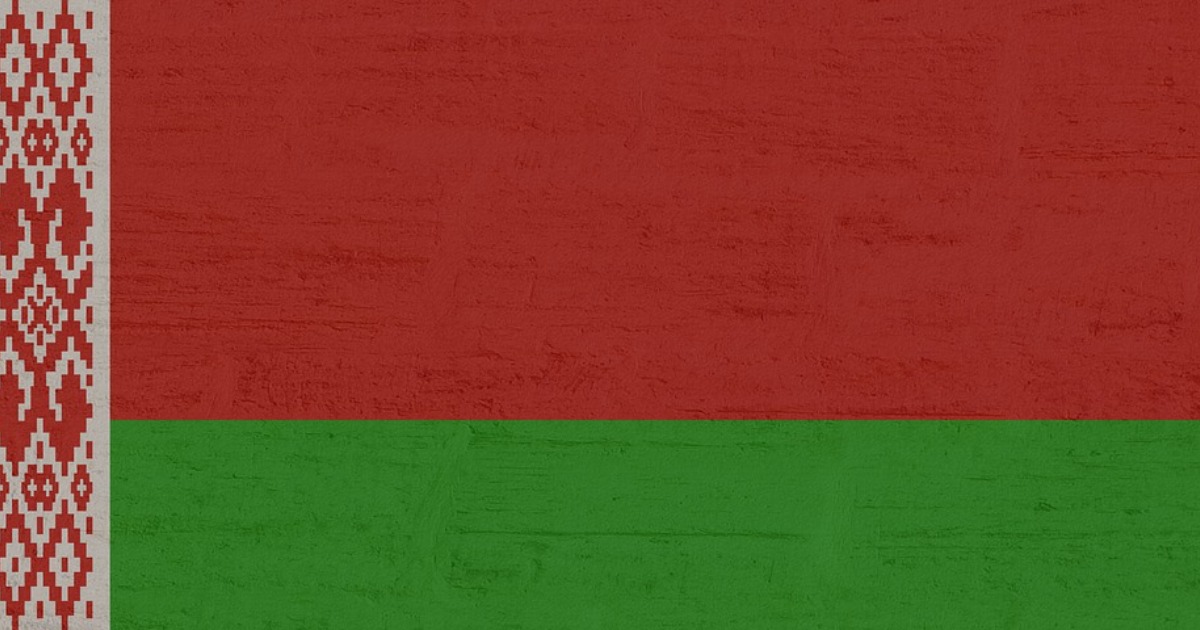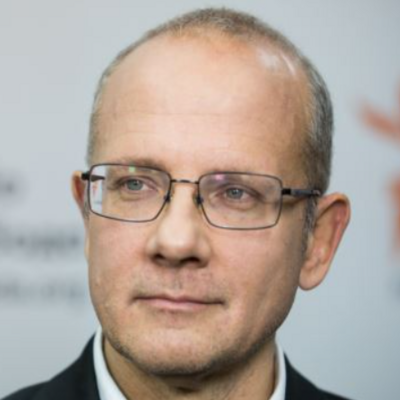Belarus and Ukraine: Historic Parallels, Russia’s Imperial Designs
Belarus is on a path of national rebirth that is increasingly incompatible with Putin’s pan-Slavic expansionism.
September 20, 2020

Most Europeans are unaware that Ukraine and Belarus are two of the culturally and geographically closest nations in Europe.
The two countries’ Eastern Slavic languages, major Christian-Orthodox сhurches and peculiar locations between Russia on the one side and the EU as well as NATO on the other are also comparable.
Post-colonial people
On one level, both nations are also very close to the — also largely Orthodox and Eastern Slavic — Russians.
And yet, the Ukrainians and Belarusians are, as post-colonial people, fundamentally different from post- and neo-imperial Russians.
That means that Russia’s international ambitions remain hegemonic — and are thus somewhat similar to those of today’s Turks and Chinese.
Despite these remarkable structural parallels between Belarus and Ukraine, most commentators — not just Western ones, but also Russian, Belarusian and Ukrainian ones — today emphasize the differences rather than similarities between the two brother nations.
“Belarus is NOT Ukraine!” is the core message of many politicians’ and experts’ recent comments on the ongoing electoral uprising in Minsk.
Belarusians’ pre-Soviet, Soviet and post-Soviet history
It is indeed important to factor in that the Belarusians have a pre-Soviet, Soviet and post-Soviet history that is distinct from that of the Ukrainians.
Belarusian nationalism during the Tsarist period was already then weaker than Ukrainian desire for national liberation — an important difference still relevant today.
The Belarusian diaspora during the Cold War years was less organized and active than the far more visible Ukrainian emigré communities in Western Europe and the United States.
Last but not least, the new Belarusian state has — unlike the Ukrainian one — participated in several of Russia’s various neo-imperial organizational schemes after 1991.
Belarus was one of the co-founders of the two principal organizations holding together Moscow’s hegemonic realm on the territory of the former Tsarist and Soviet empires today.
A “Warsaw Pact 2.0”
1. Minsk stood at the roots of the so-called Collective Security Treaty Organization (CSTO), a Russia-dominated sort of “Warsaw Pact 2.0.” It wasn’t by accident that this organization was founded on the date of Putin’s 50th birthday, in then Communist Party-ruled Moldova, on October 7th, 2002.
2. Belarus has also been a founding member of the Eurasian Economic Union (EEU) whose initial trilateral treaty was signed by Moscow, Minsk and Astana on May 29th 2014.
That was the time of the Kremlin escalating its hybrid war against Ukraine. A Moscow-directed pseudo-copy of the EU, the EEU has taken over what are traditionally considered classic national competencies, in such fields as trade and production regulation, from its member states.
Today, the Eurasian Economic Union is the major vehicle for the Kremlin’s promotion of Russia as an allegedly independent global “pole” in a supposedly “multipolar” world.
Belarus is important for this Russian geopolitical mirage because it is the only country that, in terms of geography, provides the Eurasian Economic Union with an exclusively European element (fellow EEU member Armenia is culturally European, yet — in formal geographical term — Asian).
Russia’s pawn?
On March 27th, 2014, Belarus was — along with Russia and Armenia — the only European country that voted in the UN General Assembly against the resolution condemning the Russian annexation of Crimea.
The other supporters of Moscow’s move were Bolivia, Cuba, Nicaragua, North Korea, Sudan, Syria, Venezuela and Zimbabwe.
It is also worth recalling that, exactly 8 years after the dissolution of the USSR on 8th December 1999, Belarus signed a Treaty on the Foundation of a Union State with Russia.
While it was fully ratified by both countries, this has paradoxically not yet led to the emergence of a new political union. In spite of certain institutional trappings and a small joint budget, the Russian-Belarusian Union State exists largely on paper so far.
Ukraine’s determined European stance
In contrast, Ukraine has been more or less pro-European under almost all of its leaders since 1991 — and not merely under its prominently pro-Western Presidents Viktor Yushchenko (2005-2010) and Petro Poroshenko (2014-2019).
Lest we forget, Kyiv declared full membership of Ukraine in the EU as an official aim already with a presidential decree in 1998.
The Verkhovna Rada (Supreme Council), Ukraine’s unicameral parliament, wrote the aim of accession to the EU and NATO into Ukraine’s National Security Law in 2003, and into the Ukrainian Constitution in 2019.
The conclusion of an especially sizable Association Agreement with the EU in 2014 is understood by many Ukrainians as being a step towards their country’s eventually full membership in the EU.
Despite these differences between Ukraine and Belarus, the people of Belarus increasingly see themselves as belonging to Europe.
Who likes Eurasia?
While Russians, too, tend to define themselves first and foremost as Europeans, the name that Moscow chose in 2015 for the transnational grouping that it claims to be the center of is “Eurasia” — rather than merely Eastern Europe.
One wonders how much the now nationally awakened Belarusians will be willing to follow the Kremlin in this peculiar civilizational project. It seems to hold less and less charm for many Belarusian people.
Differently put, more and more nationally aware Belarusian may have problems to accept — as Moscow proposes to Minsk — belonging to a larger cultural collective which is cryptically labeled “Eurasian” – rather than to the familiar European civilization.
The liberation-oriented pathos of the 2020 protests is posing a double conceptual problem for any future realization of the Belarusian-Russian union that Moscow may envisage.
Very unequal
On the structural level, it is clear that a Russian-Belarusian union will not be a merger of equals.
Belarus’s entire official population of approximately 9.5 million is about as large as the number of officially registered inhabitants of the city of Moscow (which altogether has about 12.5 million residents).
It is about half the size of the population of the Moscow Metropolitan Area estimated to amount to around 20 million.
The protesters today insist vis-à-vis the Lukashenko regime on the popular sovereignty of the Belarusian political nation. They express this among others with a national flag which is not the Belarusian state’s official banner.
Today’s protesters in Belarus are thus, in some ways, more radical than the Ukrainian 2004 and 2013-2014 revolutionaries who used the official Ukrainian national flag (apart from numerous party banners) as the main non-partisan visual marker symbolizing their fight for popular sovereignty.
A pivotal question obviously for Putin in Moscow and Lukashenko in Minsk is this: Will Belarusians, after their exhausting protests under Belarus’s national flag, agree to belong to a union state with a different banner and with its power center in Moscow rather than Minsk?
Partnering with Russia – yes. But with Putin?
The second conceptual problem lies in the similarities of Lukashenko’s and Putin’s political regimes and economies.
Many Belarusian may be happy, in principle, to enter a union with Russia. But a Russia that is ruled by another long-term president who is even older than their own and now widely vilified Lukashenko?
Plus, partnering with a Russia that has a political system rather similar to Lukashenko’s? Such a prospect may even be unattractive for Belarusian russophiles.
Russia’s weak economy doesn’t help
The desire among the Belarusian people to buy into partnering with Russia will be all the weaker if the Russian economy remains hampered by deep structural problems and is “progressing” only in accumulating foreign sanctions.
True, the Belarusian economy’s orientation on Russia’s markets and energy have been the prime movers of integration between the two countries.
Yet, what happens if the world price for fossil energy resources remains low? Putin will take care of his own people and may gradually run out of maneuvering space to support Belarus.
In addition, what happens if the Russian markets for Belarusian export goods — whether machinery or consumer and agricultural products — continue to shrink?
Post-revolutionary Belarusian nationalism
Putin’s Russia is in a tight spot. The emergence of post-revolutionary Belarusian civic nationalism makes the country increasingly unsuitable for submission to a Russian-Belarusian union state.
One has to wonder: what will the Kremlin’s response will be to deal with such a problem?
The touchy Crimea issue in Russian/Belarusian relations
The presumed real winner of the August 2020 Belarusian presidential elections, Sviatlana Tsykhanouskaia, in an interview confirmed that Crimea belongs legally to Ukraine.
She has thus manifestly violated Putin’s new 2020 Constitution that explicitly forbids any questioning of the integrity of Russia’s territory — to which, according to the Russian Constitution, Crimea belongs.
It seems increasingly unlikely that this and other ideological differences between the modern outlook of the Belarusian opposition and the neo-imperial worldview of Russia’s current leadership can be reconciled.
What will Moscow decide to do, if and when it eventually concludes that these contradictions cannot be diplomatically resolved?
The worst case scenario
In the worst case, Belarus’s fate may become more similar to Ukraine’s than the two nations’ very different modern histories and international embeddedness suggest.
As long as revanchism remains a major determinant of Russian foreign political behavior, the principal distinctions between Ukrainian and Belarusian national self-identification and foreign orientation may be too small to make a notable difference for Moscow.
Post-revolutionary Belarus may have, from the Kremlin’s viewpoint, to submit to a Russia-dominated union state and to accept its belonging to Eurasia — rather than Europe.
If not, the greater moderation of Belarusian protesters that is visible even in these days of protests in Belarus when compared to Ukrainian revolutionaries, by the end of the Euromaidan, may be of little consequence for Moscow.
Irreconcilable differences?
However, the continuing friendliness of today’s Belarusians towards Russia, during and after the protests, may be insufficient to compensate for their dangerously growing lack of submissiveness.
Unless Russia itself and especially its international outlook changes soon and deeply, Russia and Belarus may be heading for a showdown.
Takeaways
Today’s protesters in Belarus are in some ways more radical than the Ukrainian 2004 and 2013-2014 revolutionaries.
The emergence of post-revolutionary Belarusian civic nationalism makes the country increasingly unsuitable for submission to Putin’s vision of a Russian-Belarusian union state.
More and more nationally aware Belarusian have problems accepting their presumably belonging to a larger cultural collective which is “Eurasian” (as promoted by Putin) – rather than to the familiar European civilization.
It seems increasingly unlikely that the ideological differences between the modern outlook of the Belarusian opposition and the neo-imperial worldview of Vladimir Putin’s Russia can be reconciled.
In the worst case, Belarus’s fate may become more similar to Ukraine’s than the two nations’ very different modern histories and international embeddedness suggest.
